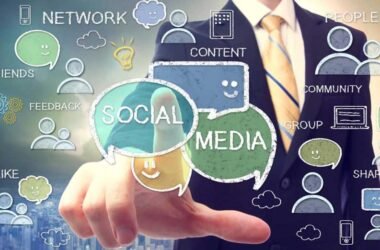Imagine stepping into a world where music reacts to your every move, and melodies unfold in real-time based on the environment around you. That’s exactly the kind of magic happening at the intersection of AI music and augmented reality (AR). As both technologies advance rapidly, their fusion is giving rise to breathtaking, interactive experiences that blur the lines between the digital and physical worlds.
In this article, we’ll dive deep into how AI-generated music and AR are merging, what this means for industries like gaming, education, and entertainment, and how creatives can start experimenting — even if they’re just starting out. (Spoiler: it helps to have an AI music generator for free, like Adobe Express, to kick off your journey.)
How AI Music Elevates Augmented Reality
At its core, augmented reality enhances the real world by overlaying digital information — visuals, sounds, and even smells — onto our physical surroundings. AI-generated music adds another immersive layer to this by offering dynamic, customized soundtracks that evolve based on user behavior and environment.
Instead of static background music, AI allows for adaptive soundscapes. Imagine an AR fitness app where the tempo of your music speeds up as you jog faster, or a museum guide that shifts its background score depending on the art you’re viewing. AI analyzes real-time data (location, speed, emotional cues) to generate perfectly matched tunes.
Real-World Applications: Where AI Music and AR Shine Together
- Gaming and Entertainment
Games like Pokémon GO opened the world’s eyes to the potential of AR. Now imagine adding AI music that shifts from lighthearted to intense as you encounter different challenges or environments in the game. This heightened emotional response drives deeper engagement and immersion.
Concerts are also starting to embrace this combination. Artists can create AR-enhanced shows where attendees see holographic elements while listening to AI-personalized remixes of live performances. Early experiments, such as Travis Scott’s Fortnite concert, hint at where this might lead.
- Education and Museums
Museums are using AR for interactive exhibits — and with AI music, the experience becomes even more vivid. Instead of a generic audio tour, you might walk through an ancient Egyptian gallery with music that changes as you enter each room, reinforcing the themes and emotions of the displays.
Similarly, educational AR apps can use AI music to enhance storytelling, making historical events feel more immediate and relatable to students.
- Retail and Brand Experiences
Forward-thinking brands are already exploring AR for marketing. Adding dynamic AI music personalizes the shopper’s journey even more. Picture trying on virtual clothes in an AR dressing room where the music shifts based on your style choices — creating an unforgettable, multisensory shopping experience.
How Creators and Developers Can Start Exploring
You don’t need a massive budget or a background in AI programming to start experimenting with AI music and AR.
- Use free AI music generators: It truly helps to have an AI music generator for free at your fingertips. Adobe Express offers intuitive tools that allow you to create original tracks quickly without needing musical training.
- Explore AR development platforms: Tools like Spark AR Studio (for Instagram and Facebook) or Unity (using AR Foundation) let you create interactive AR experiences with relative ease.
- Focus on storytelling: The best AR + AI music projects aren’t just about tech — they tell a story. Think about the emotions you want to evoke and how music can enhance them.
- Collaborate: Partner with musicians, developers, and designers to create richer, layered experiences.
Challenges to Consider
While the opportunities are exciting, there are also challenges:
- Technical complexity: Syncing AI-generated music with real-time AR actions demands robust algorithms and low-latency connections.
- Copyright and originality: As AI generates more content, questions around ownership and royalties become thornier.
- Hardware limitations: High-quality AR experiences still often require newer devices, which limits audience reach.
Nonetheless, as technology evolves and democratizes, these barriers are gradually lowering.
The Future: Hyper-Personalized Experiences
Looking ahead, AI music in AR will likely become hyper-personalized. Future apps could combine biometric feedback (like heart rate or facial expressions) with environmental data to generate soundscapes uniquely tailored to each user — in real time.
Imagine theme parks where your ride experience (and its soundtrack) is never the same twice, or therapy apps that create calming musical environments based on your mood and surroundings.
Final Thoughts
The fusion of AI music and augmented reality is only just beginning, but it’s already transforming the way we interact with the world. Whether you’re a game developer, educator, marketer, or curious creative, now’s the time to start exploring these technologies. Grab an AI music generator, experiment with AR tools, and let your imagination lead the way — because the future of immersive experiences is being written today, one beat and one pixel at a time.








